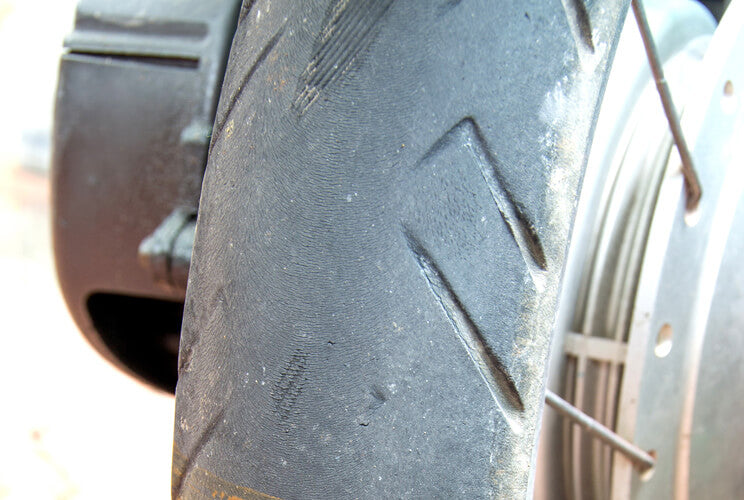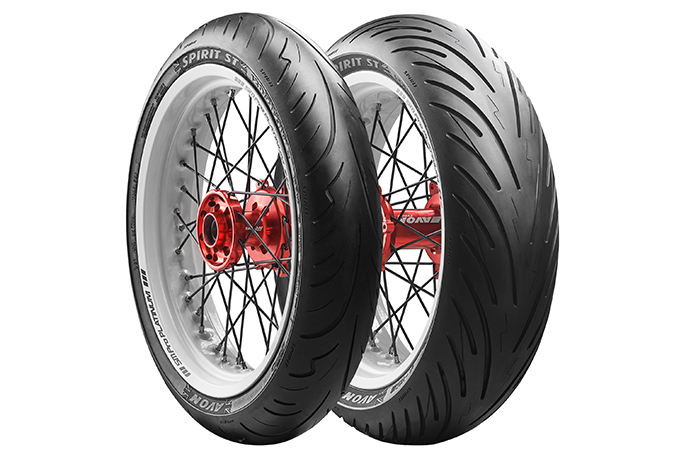Using the motorcycle tyre guide to decode tyre speed ratings and load indexes
All Concerning the Crucial Motorcycle Tyre Overview for Optimum Bike Upkeep and Performance
The Important Motorbike Tyre Guide functions as a crucial source for motorcyclists looking for to improve their bike's performance and security. motorcycle tyre guide. It offers insights right into various tyre kinds and specs that affect taking care of and longevity. Furthermore, comprehending proper maintenance methods can considerably expand tyre life. Many motorcyclists ignore crucial variables that impact their riding experience. Exploring these facets can cause educated decisions that eventually enhance both security and satisfaction when traveling
Recognizing Motorcycle Tyre Kind
When picking motorcycle tires, understanding the different kinds readily available is essential for peak performance and security. Motorcyclists run into various tire categories, each designed for certain riding styles and conditions. For instance, sport tires emphasize grip and responsiveness, making them ideal for high-performance bikes and track use. Touring tires, on the other hand, focus on durability and convenience, suitable for long-distance experiences. Off-road tyres include hostile tread patterns, offering grip on uneven surfaces, while dual-sport tyres offer versatility for motorcyclists who shift in between off-road and on-road conditions.Additionally, cruiser tyres are made for stability and a smooth trip, dealing with the special requirements of cruisers and exploring bikes. Comprehending these categories permits riders to select tyres that straighten with their riding behaviors and ecological conditions, ultimately enhancing both security and performance. Each kind plays a vital function in making sure a superior riding experience tailored to the individual motorcyclist's demands.
Trick Tyre Specs Described
Picking the proper motorcycle tyres involves even more than just comprehending the different kinds; it likewise requires familiarity with vital specifications that influence performance and safety. Key requirements consist of tire dimension, which is typically expressed as a collection of numbers indicating size, facet proportion, and edge size. This code is essential for making certain compatibility with the motorcycle.Another essential requirements is the lots index, suggesting the maximum weight a tyre can sustain. The rate ranking signifies the maximum rate a tire can safely manage, important for performance enthusiasts.Additionally, tread pattern and rubber compound influence hold, stability, and use qualities. Tires with a softer substance often tend to give better hold yet wear faster, while more difficult substances last much longer however may compromise traction. Comprehending these requirements enables motorcyclists to make enlightened decisions, enhancing both their safety and riding experience.
How to Select the Right Tyres for Your Bike
How can a cyclist warranty they choose the ideal tires for their bike? Choosing the proper tires entails understanding the particular needs based on riding weather, design, and surface conditions. Motorcyclists ought to first seek advice from the motorcycle's handbook to determine recommended tire sizes and specifications.Next, they must review the kind of riding they intend to do-- whether it's commuting, touring, or off-road. Each category has distinctive tire styles tailored for peak performance.Additionally, motorcyclists ought to assess tread patterns; much deeper footsteps supply much better hold in damp conditions, while shallower footsteps improve stability on dry surfaces.Lastly, it is important to examine the tyre's construction and product, as these variables influence durability and handling (motorcycle tyre guide). By evaluating these elements meticulously, a biker can with confidence pick tyres that improve safety and security, performance, and overall riding experience
The Importance of Tire Pressure and Upkeep
Tire stress is a considerable facet of motorcycle upkeep that directly affects safety and performance. Preserving the proper tire pressure warranties optimal contact with the road, improving hold and stability throughout rides. Under-inflated tires can bring about raised rolling resistance, causing poor fuel effectiveness and unnecessary endure the tyres. Alternatively, over-inflated tyres might reduce and trigger a severe experience grip, especially in damp conditions.Regularly checking tire pressure, ideally before each experience, is important to maintaining the bike's general performance. Cyclists must describe the producer's specs for the suggested stress levels. In addition, monitoring tyre condition and adjusting pressure according to tons and riding problems is vital for safety. Proper tire upkeep adds to prolonged tire life expectancy, much better handling, and boosted stopping performance. Ultimately, consistent interest to tyre pressure and maintenance is critical for ensuring a delightful and secure riding experience.

Recognizing Signs of Tyre Wear and Damage
Recognizing indications of tyre wear and damage is vital for keeping motorbike safety and performance. Key indications consist of evaluating walk deepness and carrying out an extensive visual evaluation for any type of noticeable damages. Addressing these elements quickly can prevent additional difficulties on the roadway.
Step Deepness Evaluation
As motorcyclists take to the roadways, the relevance of assessing walk deepness can not be overemphasized, given that put on or harmed tyres can greatly affect safety and security and efficiency. Walk depth directly impacts grip, braking distance, and cornering security. To examine tread deepness, motorcyclists ought to utilize a tread deepness scale, measuring the grooves at different factors across the tyre. A depth of 2mm or less indicates significant wear and necessitates immediate substitute. Furthermore, riders can utilize the "penny examination" by putting a coin into the walk; if the top of Lincoln's head is noticeable, the tyre is too worn. Routine checks guarantee peak grip on varied roadway problems, promoting a much safer riding experience while boosting the general handling of the motorcycle.
Aesthetic Damage Assessment
Checking motorcycle tyres for aesthetic damages is crucial for maintaining safety and security on the road. Bikers ought to regularly take a look at tyres for indications of click now wear such as splits, bulges, or punctures. Unequal wear patterns might indicate placement problems or incorrect rising cost of living, leading to jeopardized efficiency. Additionally, examining for foreign objects embedded in the tread can protect against prospective blowouts. Motorcyclists should pay attention to the sidewalls, as any kind of abrasions or cuts can deteriorate the tyre's framework. Making certain that the tread is devoid of extreme wear is crucial for ideal grip. Normal visual examinations not only enhance safety and security however additionally prolong the life of the tires, guaranteeing a smoother and a lot more trusted riding experience. Prompt discovery of damage can stop expensive repair services and crashes.
Seasonal Tire Factors To Consider for Various Riding Problems
When thinking about motorcycle tyres, seasonal problems play an essential duty in efficiency. In damp weather condition, tires developed for boosted grip and water displacement come to be important for safety and security. Additionally, winter riding requires specific tyre attributes to guarantee peak traction on cold, possibly icy surface areas.

Wet Weather Performance
Wet weather condition conditions existing unique challenges for motorcyclists, making the selection of tires critical for security and efficiency. Tyres created for wet weather normally feature much deeper treads and specialized rubber this post substances that enhance grasp on slippery surface areas. These tires are engineered to transport water away, reducing the risk of aquaplaning and improving stability throughout rainfall. Motorcyclists must think about tires with a balanced layout, supplying both traction and longevity in wet problems. In addition, maintaining correct tyre pressure is essential, as under-inflated tyres can jeopardize efficiency. Routine evaluations for wear and damage are required to assure peak function when confronted with rain-soaked roadways. Selecting ideal wet-weather tyres inevitably adds to a much safer and much more delightful riding experience.
Wintertime Tire Needs
Riding in wintertime problems postures distinct challenges that demand specific tyre demands to assure security and efficiency. Winter months bike tires are made with much deeper treads and softer rubber compounds, offering improved grasp on cool and unsafe surface areas. This is essential for preserving traction on ice, snow, and damp roadways. Furthermore, winter season tyres often include an one-of-a-kind walk pattern that helps channel water away, lowering the danger of aquaplaning. Riders ought to likewise think about the tire's temperature level durability, as performance can reduce in extreme cold. It is necessary to on a regular basis inspect tyre pressure, as it can go down considerably in reduced temperature levels. By selecting the suitable winter season tires, motorcyclists can browse severe conditions with better confidence and stability, ensuring a safer riding experience.
Tips for Proper Tire Storage and Longevity
Proper tyre storage space is vital for maintaining their long life and performance over time, as disregarding this facet can lead to early deterioration. To ensure suitable storage space, it is vital to maintain tyres in a cool, dry atmosphere far from direct sunlight and sources of heat, such as heating systems or radiators. Excessive warmth can cause rubber substances to break down, compromising the tyre's integrity.Additionally, tires must be stored upright or stacked horizontally, relying on their type. It is advisable to rotate them periodically to protect against level spots if piled. Proper rising cost of living is also crucial; tires must be pumped up to the supplier's recommended stress to avoid deformation.Lastly, it is useful to cover tyres with a safety product to shield them from dust and impurities. Following these suggestions will certainly aid expand the life of motorcycle tires, guaranteeing they continue to be reliable and risk-free for usage reference when the riding season resumes.
Often Asked Concerns
How Commonly Should I Replace My Bike Tyres?

Can I Mix Different Tire Brands on My Motorbike?
Blending various tyre brands on a motorbike is typically not recommended. Variations in tread patterns, rubber compounds, and performance features can bring about uncertain handling and endangered safety and security, possibly boosting the threat of accidents.
What Is the Life expectancy of a Motorcycle Tire?
The life expectancy of a motorcycle tire usually ranges from 5,000 to 15,000 miles, influenced by factors such as riding terrain, tire, and style upkeep. Routine examinations can aid guarantee peak efficiency and safety throughout their usage.
How Do I Dispose of Old Motorcycle Tyres?
When throwing away old bike tires, they ought to be required to assigned recycling facilities. Many neighborhood waste management solutions additionally supply tire disposal programs, making sure eco friendly handling and compliance with neighborhood policies concerning tyre waste.
Exist Any Tyre Service Warranties Readily Available for Motorbikes?
Numerous motorcycle tire manufacturers supply warranties that cover flaws in material and handiwork. The specifics differ by brand and design, so it's vital for riders to examine specific warranty terms before acquiring new tyres. Off-road tyres include aggressive step patterns, offering grip on unequal surfaces, while dual-sport tires provide convenience for motorcyclists that move in between on-road and off-road conditions.Additionally, cruiser tires are developed for stability and a smooth experience, providing to the distinct demands of cruisers and touring bikes. Each classification has distinct tire designs tailored for peak performance.Additionally, cyclists should assess tread patterns; deeper footsteps supply better grasp in damp problems, while shallower footsteps improve security on completely dry surfaces.Lastly, it is crucial to analyze the tire's building and material, as these elements affect durability and handling. Appropriate tyre maintenance adds to extended tyre life expectancy, far better handling, and boosted braking performance. Correct rising cost of living is additionally important; tires need to be pumped up to the producer's suggested stress to avoid deformation.Lastly, it is useful to cover tyres with a protective product to secure them from dirt and contaminants. The life-span of a motorbike tire usually ranges from 5,000 to 15,000 miles, affected by variables such as riding tyre, design, and surface upkeep.